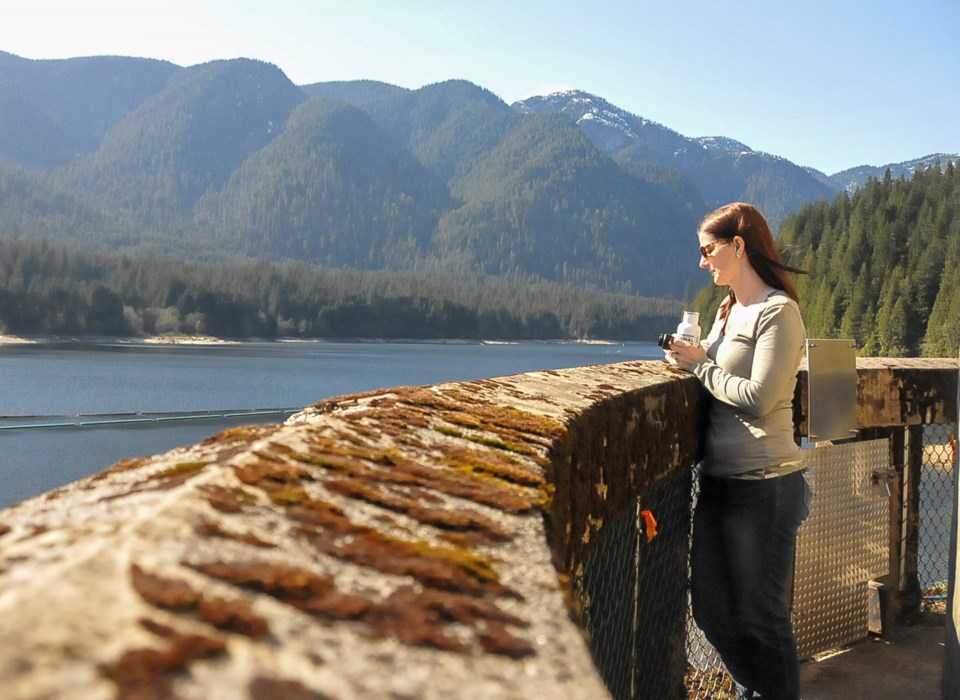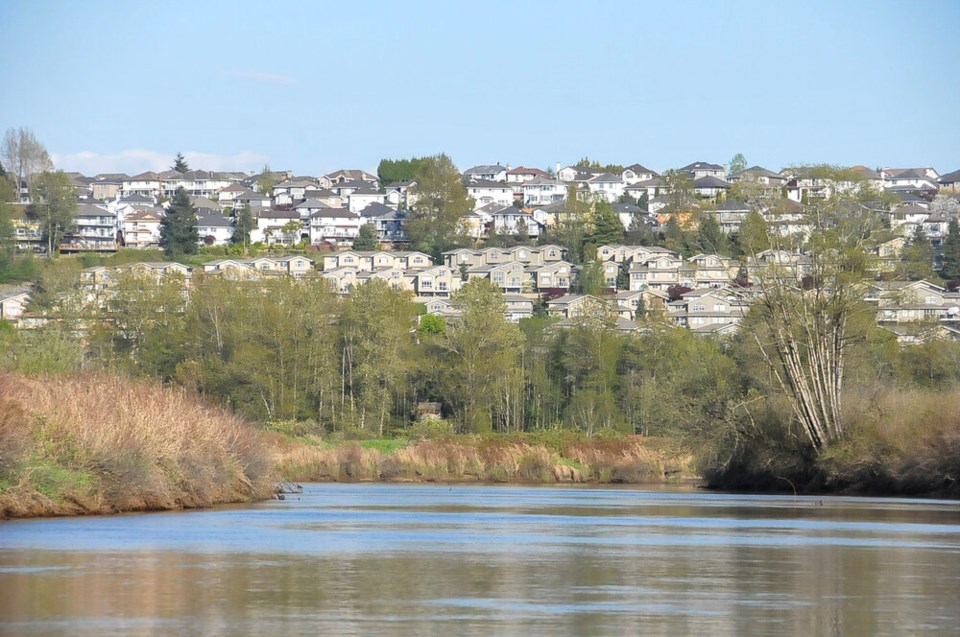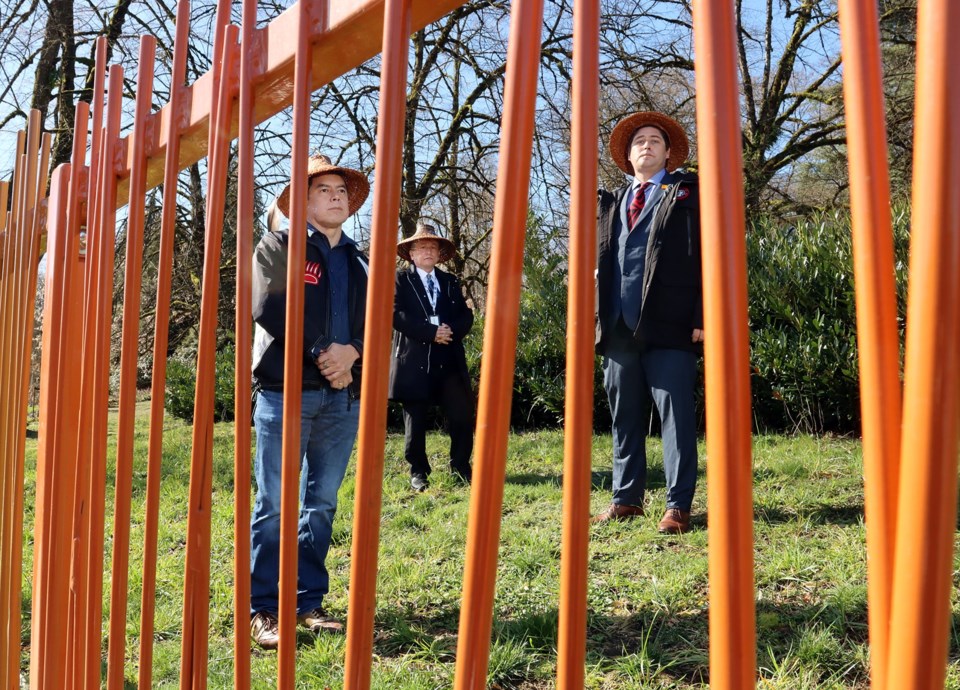On a recent sunlit afternoon, Heidi Walsh stepped onto the observation deck of a century-old concrete tower overlooking 600 square kilometres of mountain forest.
Below her, a mountain lake said to run deeper than sea level fed a constant surge of water into the tower, through a network of pipes and into the homes of roughly a million people across Greater Vancouver.
“The amount of work and distance our water travels to get to our taps…” said Walsh, looking out onto the 16-kilometre-long Coquitlam Reservoir. “If people just thought of it more as a precious resource.”
Metro Vancouver has banked more than half the region’s future water supply on this reservoir. By the mid-2030s, the regional body plans to plunge a new tower even deeper into the lake, more than doubling the amount of water it can draw by mid-century.
While –°¿∂ ”∆µ moves ahead with its controversial $16-billion Site C Dam, another dam, older and on Vancouver's doorstep, has become a crossroads in the fight to secure water for millions of people over the next half-century.
But with the fate of an Indigenous community and the river they live on at stake, some are asking, "At what cost?"
A POPULATION-CLIMATE SQUEEZE
As Metro Vancouver’s director of watershed and environmental management, Walsh is responsible for making sure the surrounding forest stays alive and healthy, fulfilling its role as a massive filter for our tap water.
Whereas on the coast, are projected to regularly flood large swaths of Surrey, Richmond, Delta and Vancouver by 2050; in the mountains, the greatest risk to the region’s drinking water is fire.
Much of the lakeside was logged in the early 1900s to flood its shores and make room for work camps. Stands of Western Hemlock have sprung up in the intervening years, ringing the lakeside in second-growth trees.
Trees unable to cope with cyclical insect infestations act as tinder-dry fuel for up to two years after they die. Walsh said it’s not clear how climate change will impact such cycles, but in other species, like the West Coast’s iconic cedars, there are already signs that our march toward extended droughts is leading to a die-off.
“We’ve got to be able to adapt to that,” she said. “Protecting the forest is the most important part.”
From the outside, anyone threatening the trees with a cigarette butt or campfire faces multiple security checkpoints and a team of guards patrolling by truck, helicopter and on foot. The biggest pressures, said Walsh, don’t come from careless hikers, but the million more people expected to arrive in the region by 2050, when 3.8 million people will open their taps in the morning to brush their teeth.
By 2036, Metro Vancouver predicts a growing population means the current water supply won’t be enough to ward off stage 3 and even stage 4 emergency water restrictions — limiting water use to essential needs — during the hottest summer months.
“There’s no doubt — our climate projections predict a modest increase in rainfall by the 2050s,” said Lucas Pitts, the director policy, planning and analysis for Metro’s water services department.
But nearly all of that rain, added Pitts, is expected to fall in extreme weather events during the wet months; dwindling summer rain will increasingly lead to extended drought, according to .

Metro has a plan, but it’s incredibly expensive and not a permanent solution. Thirty years from now, a nearly is slated to boost the water extracted from the Coquitlam Reservoir, so that, by 2040, at least 60 per cent of the Metro region will be drinking the lake’s water.
How water-stressed Metro Vancouverites will be in the interim will largely depend on how much they can curb their wasteful habits.
In the last decade, water consumption across the region has dipped even as the population climbs. Education campaigns to get people to limit washing their car or watering their gardens are working. But there will be a limit, according to modelling from Metro Vancouver.
About 15 years from now, said Walsh, water consumption will outpace the arrival and birth of new residents.
DOWNRIVER, A FIRST NATION FIGHTS ON
Long before the Coquitlam Reservoir was tapped as a source of Metro Vancouver’s drinking water, the Kwikwetlem First Nation (KFN) was synonymous with the river.
Sockeye, like all Pacific salmon once plentiful in the Coquitlam River, formed an important part of the community’s food source and identity, so much so that the name Kwikwetlem is translated from the traditional Halkomelem language as “red fish up the river.”
But 105 years ago, that changed. A dam built to buttress the first hydro project to light up Vancouver’s streets also decreased flows downriver, decimating the Coquitlam River’s salmon population.
Habitat destruction, repeated over and over again up and down the Fraser River, has since combined with a rising death rate at sea in recent decades. Fishing and climate change have squeezed salmon populations.
“Our elders stopped fishing the Coquitlam River in 1983,” said KFN Coun. George Chaffee. “There was no fish to be had there.”
Between 1980 and 2014, the Fraser averaged 9.6 million sockeye returns annually, with up to 28 million one year. But the last two years saw some of the worst returns in the river’s history, bottoming out at , the lowest since record-keeping began in 1893.
“Other First Nations have one or two environmental disasters,” said Chaffee. “We have all of them: climate change, diking, silting. The whole river is changing.”
In 2017, 5,000 hatchery-raised sockeye salmonids were released into the Coquitlam River in a bid to kickstart a return. But last summer, when a was found in a fish trap at the dam, closer inspection revealed it was not one of the released fish.
Beautiful female sockeye, just the second "red fish up the river" in 2020 in the Coquitlam River (and in the past 2 years). Silvery early return, remnant, reminder, and hope for this unique early Fraser race of sockeye.
— Craig Orr (@CraigOrr_)
Over the last two years, Chaffee has pushed Metro Vancouver and –°¿∂ ”∆µ Hydro to come to the table and renegotiate the Coquitlam River’s water use plan put into place in 2006.
Part of a renegotiated plan could mean –°¿∂ ”∆µ Hydro through the dam at critical times in the salmons’ reproductive cycle.
When the –°¿∂ ”∆µ government passed legislation in 2019 to harmonize its laws with the United Nations Declaration on the Rights of Indigenous People (UNDRIP), it changed the playing field, said Chaffee.
Among its provisions, the law requires that Indigenous peoples are included in all decisions that impact their rights, and that all projects on Indigenous land receive consent from the communities.
“It’s your responsibility because you’re the ones who put the dam in,” he said, speaking to the province.
“They’re being kind of dragged to the table. We’re not giving them a choice. We’re not asking you. We’re telling you. These are issues that you have to deal with — for the health of the river.”
Most of Kwikwetlem’s community lives in a small village enclave at the mouth of the Coquitlam River, known as Indian Reserve 1. In a push to reclaim a fraction of its traditional territories, the First Nation is locked in a land claim case currently before the –°¿∂ ”∆µ Supreme Court. A win could return massive swaths of land to the KFN, both from the City of Port Coquitlam and Metro Vancouver’s Colony Farm Regional Park.
The Coquitlam River flows through all of those lands, lands which are increasingly bordered by development on all sides.
“When you have development, you need drinking water,” said Chaffee. “We’re kind of looking at them and saying, ‘It’s a resource and we’re challenging you. Anything you’re considering — you need to deal with First Nations on that level.’”

WHAT WILL WATER SCARCITY COST YOU?
Below the dam, water is scarce.
The Coquitlam Dam limits the amount of water that can flow downriver; –°¿∂ ”∆µ Hydro currently redirects water through a into Indian Arm, where it drives turbines at two powerhouses to generate enough electricity for roughly 18,000 homes, or 0.4% of the utility’s overall capacity.
On top of the dam, urban water use, development and drought conditions made worse by climate change are all slated to cut available water for the river’s fish and plant life, according to a November 2020 study commissioned by the Coquitlam River Watershed Roundtable.
The calls on the province to step in whenever water levels fall to a critical threshold that threatens fish survival. The report says the province should set a precedent under the Water Sustainability Act by rolling out critical environmental flow protection and fish population protection.
But for Walsh, the Metro scientist who oversees the upper watershed’s forests, stopping at the Coquitlam River would be shortsighted.
“If the province goes that way, I’d hope it would be for the whole region,” she said. “It's something we have to talk about.”
The report also recommends all Metro Vancouver municipalities, but especially the neighbouring cities of Port Coquitlam and Coquitlam, immediately phase in mandatory water metering.
Deborah Curran, who oversaw the report as head of the University of Victoria Environmental Law Centre, said municipalities, from the to West Vancouver and Los Angeles, have shown water metering works.
“You get X amount of litres at a base rate. Then anything above that you charge them a lot more,” she said, pointing to what is the best and most equitable way to manage water going forward.
The problem, said Curran, is the huge money required upfront to install metering infrastructure. In Coquitlam, the city’s director of utilities, Jonathan Helmus, estimated the cost to install water meters would land between $1,500 and $2,000 per detached home. That works out to roughly $45 million in upfront capital costs for that city alone.
“That’s where it gets stuck. It’s simply a local political money problem,” said Curran.
But once that hurdle is cleared, water metering has the potential to nudge water consumption, which currently stands at among the highest per capita in the world, to something more sustainable — for people, fish and the innumerable species that rely on a complex riverine ecosystem.
Everyone across Metro Vancouver needs to get comfortable with the idea that if we have two months of no rain and we still want to see salmon in our rivers, then we’re not going to have green lawns, said Curran.
“There’s no right to water our garden, nor is there a right to water our car. It’s really low-hanging fruit,” she said.
For as long as the province has dammed rivers, –°¿∂ ”∆µ Hydro has called the shots on who gets water when. According to Curran, that needs to change.
Re-balancing public interest, she added, means re-imagining a world where a keystone species get priority over a green lawn.
“Climate change is going to affect each community very differently. We need to put the infrastructure in place now for what’s going to happen in 50 years,” she said.
“There has to be a cultural change. We are past the era of unrestricted water use — simply, that era is gone.”

‘A HUGE LEAP’
Even in a best-case scenario, the fish won’t come back overnight. More than anyone, the Kwikwetlem people know that.
But just as they take the province, Metro Vancouver and Port Coquitlam to court over their title land rights, KFN is also pulling every lever they have under UNDRIP to reclaim what was once theirs.
Without salmon, they are casting their gaze above the dam to the snow-crested mountains of the upper watershed.
In April, KFN officially submitted a letter to Metro Vancouver calling for access to some portion of the 60,000 hectares of forested lands that catch a third of the region’s water and where outsiders are barred entry.
Chaffee said KFN wants to re-establish its old hunting grounds, pursue deer and open up a source of traditional food for the community.
“This would be a huge leap. Even for Metro. But they’re at the table,” said Chaffee. “We got to start somewhere.”
“Elders always talk about being on the same road, being together. We’re willing to do that; 120 years is enough. Enough is enough. We want to come home.”
— With files from Carla Wilson
.png;w=960;h=640;bgcolor=000000)



